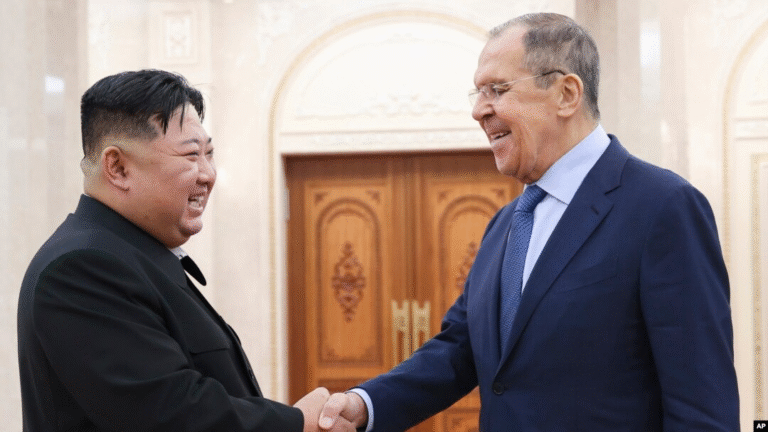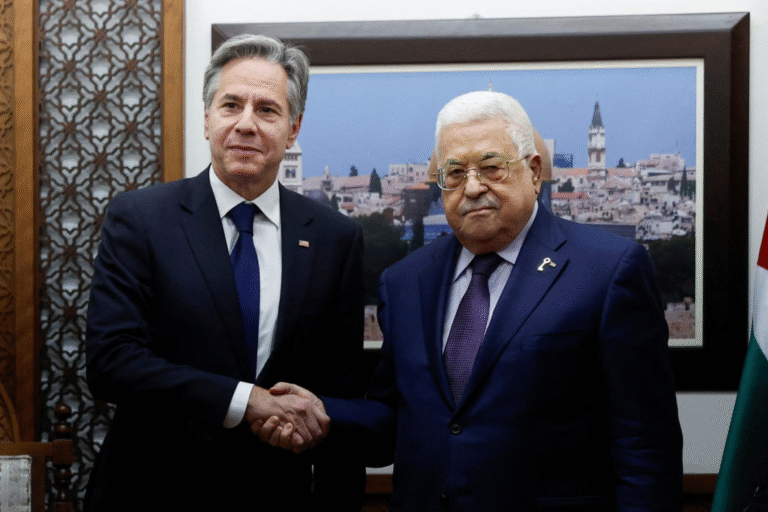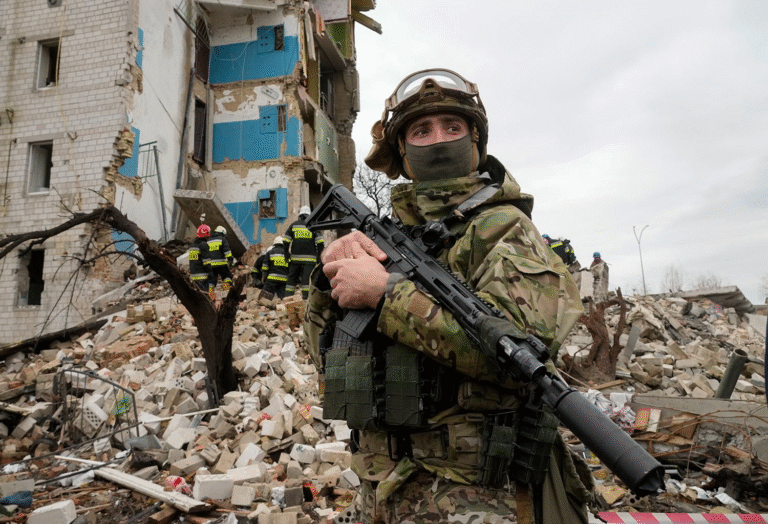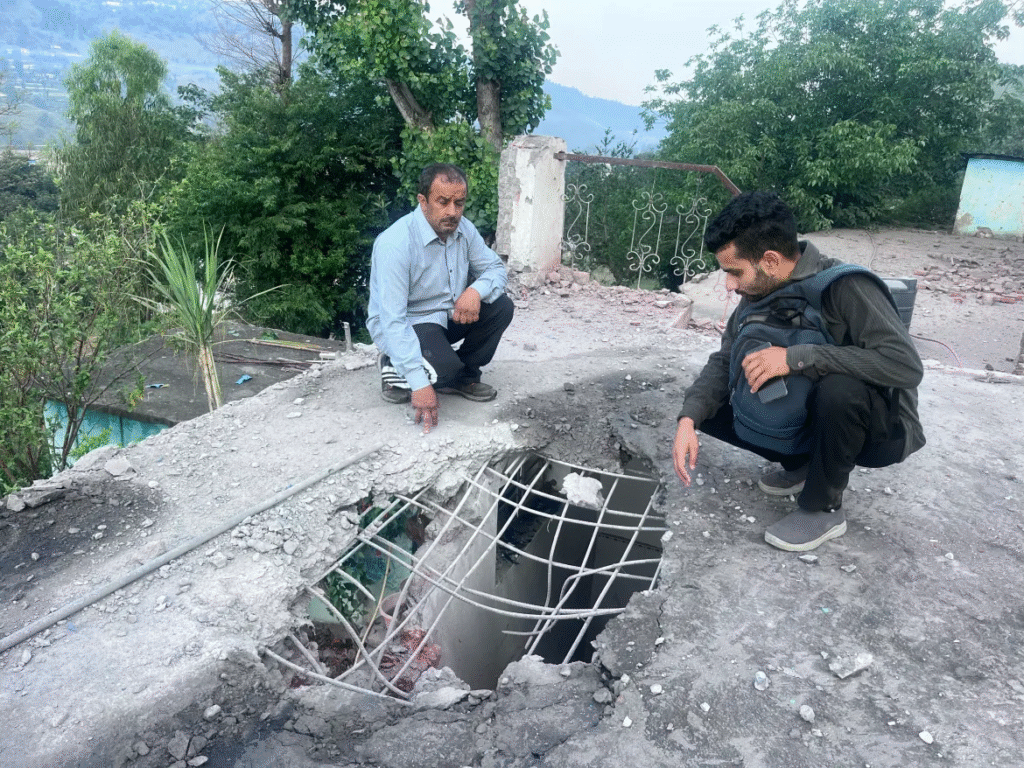
Indian villagers living near the Line of Control between India and Pakistan
examine damage from a Pakistani shell. [Rahi Kapoor/AP Photo]
Valentia Ramos
The America-Eurasia Center
www.EurasiaCenter.org
South Asia and
International Security Programs
America-Eurasia News

Map of the disputed region. Credits: The Economist
Why are Relations Tense?
Relations between India and Pakistan have been characterized by a tense peace punctuated
by a series of violent conflicts since the Partition of British India in 1947. The Partition of British
India split Pakistan (a Muslim majority country) and India (a Hindu-majority country)-and left the
two regions of Jammu and Kashmir undecided.
At the time, Jammu and Kashmir, ruled by Maharaja Hari Singh (a Hindu king ruling over a
Muslim-majority population), chose to remain independent rather than accede to either country.
However, late 1947 saw Pakistani tribal militias invade the region. The Maharaja responded by
seeking military assistance from India, which agreed on the condition that the state officially accede
to India. This marked the beginning of a territorial dispute that has fueled eight major conflicts,
including the recent outbreak of violence on April 22, 2025, driven by disputes over Kashmir,
religious and political tensions, and cross-border terrorism.1
What Caused the Recent Conflict?
The most recent conflict was the result of a terrorist attack that killed 26 civilians—
including tourists—in Pahalgam (in Indian-administered Kashmir). India blamed Pakistan-based
militant groups Jaish-e-Mohammed and Lashkar-e-Taiba, though Pakistan denied any involvement
(Mashal). Following the attack, skirmishes and cross-border shelling intensified along the Line of
Control (LoC)—the militarized de facto border between Indian- and Pakistani-controlled Kashmir.
Between April 23 and May 6, the LoC saw the most sustained crossfire in years.2
India responded with Operation Sindoor, a series of missile strikes targeting what it claimed
were militant camps in Pakistan and Pakistan-administered Kashmir. The operation’s name,
Sindoor, is symbolic: in Indian tradition, Sindoor is a red mark worn by married Hindu women as a
symbol of protection and commitment. The attack in Pahalgam had notably targeted Hindu men
while sparing women, leading to viral videos of widows removing their Sindoor. India named the
operation to signal vengeance and national resolve.3
Moreover, there were reports suggesting that Pakistan carried out retaliatory missile strikes
targeting Indian military infrastructure, including forward operating bases and supply lines. The use
of drones—possibly for surveillance and limited precision strikes—was observed, though their
origin and payload capacity remain unverified.4 These are only some of the incidences of
non-contact warfare that Pakistani has claimed to have used, as others have yet to be confirmed and
verified. Since reports are yet to be released and analyzed, the full extent and effectiveness of these
tools remain uncertain, highlighting the opaque and evolving nature of modern regional warfare.
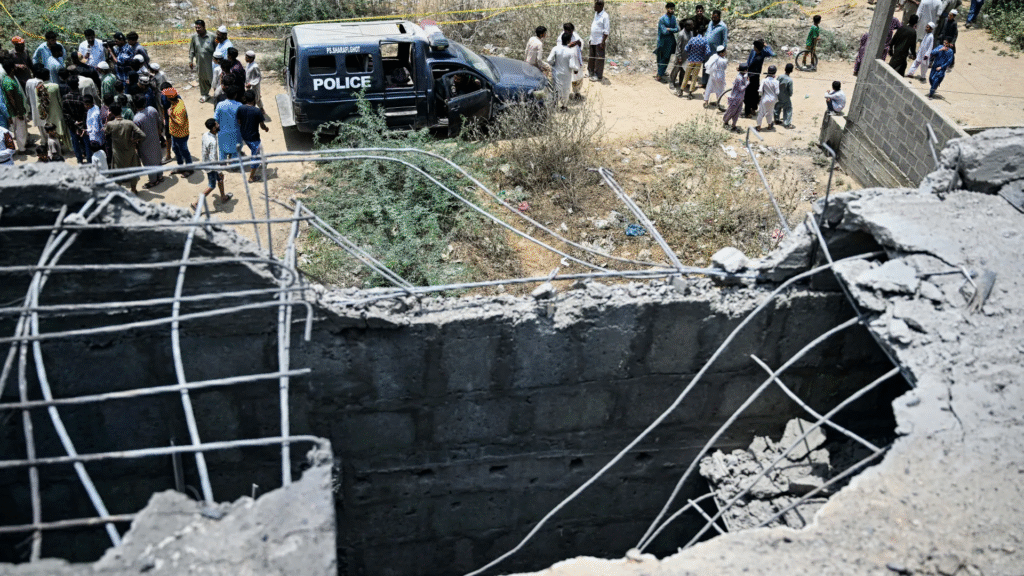
Residents gathered in Karachi where a drone was shot down. Credits: Rizwan Tabassam/AFP/ Reuters
How Does it Affect the World?
The aftermath of the conflict is yet to be fully assessed, but many impacts of it have already
been observed. One of the most troubling dimensions is that both countries are nuclear powers. As
the conflict escalated rapidly, concerns over potential nuclear use resurfaced in global media,
despite “nuclear taboo” and a history of restraint between the two nations.5
Another key takeaway is the increasing role of non-contact warfare, a term developed
largely in Western military doctrine to refer to high-precision, low-footprint operations that
minimize direct human engagement. Instead, non-contact warfare relies on drones, cyberwarfare,
long-range missiles, and satellite intelligence.6 These tools emphasize real-time battlefield
awareness and the capability of striking deep into enemy territory without physically needing to
cross borders.7
During Operation Sindoor, India reportedly deployed hypersonic-capable drones, precision guided
missile strikes, and high-altitude surveillance—all without large-scale troop deployments. This
allowed India to respond forcefully while minimizing its casualties, but it also increased the
potential for civilian infrastructure damage, especially in densely populated or poorly defended
areas.8 Pakistan’s use of missile strikes, drones, alleged cyber operations, and
various other tools was suggested but has not yet been confirmed.9
Experts warn that non-contact warfare, while less visibly bloody, can cause wider
destabilization and psychological trauma, especially among civilians who are never formally part of
combat zones but remain vulnerable to long-range or cyberattacks.10
What is Happening Now?
Both India and Pakistan have agreed to a ceasefire, though the situation remains fragile.
India’s Prime Minister Narendra Modi, in his first public address since the conflict, stated that
“Operation Sindoor was not just a name—it was India’s resolve turned into action”.11
However, just hours after the ceasefire, India accused Pakistan of violating the agreement through
artillery fire and drone surveillance in Jammu and Kashmir. India’s Foreign Secretary Vikram
Misri warned that any repetition would be “met with a strong response.” Pakistan’s foreign ministry
responded with accusations of India of breaching the ceasefire.12
As of now, both countries have closed airspace to each other’s aircrafts, airlines, and
military crafts until Jul7 24th.13 India has claimed that all attackers involved in Pahalgam
were Pakistani nationals14 and stated that it has no plans to ever restore the Indus Waters
Treaty.15 Pakistan’s Foreign Minister and Pakistan Peoples Party (PPP) chairman Bilawal
Bhutto-Zardari, in response, has said that Pakistan will go to war if India does not restore the
Indus Waters Treaty, calling it a violation of the UN Charters that incurs India’s suspension.16
- “Conflict between India and Pakistan | Global Conflict Tracker.” Council on Foreign Relations.
Accessed May 13, 2025. https://www.cfr.org/global-conflict-tracker/conflict/conflict-betweenindia-and-pakistan. ↩︎ - Mashal, Mujib. “What We Know About How the 4- Day India-Pakistan Clashes Unfolded.” The
New York Times, May 11, 2025. https://www.nytimes.com/2025/05/11/world/asia/india-pakistanwhat-weknow.html#:~:text=India%20and%20Pakistan%20both%20claimed,up%20in%20all%2Dout%20w
ar. ↩︎ - K.B., Pragati, and Anupreeta Das. “The Symbolism behind India’s ‘Operation Sindoor’ – The New
York Times.” The New York Times, May 7, 2025.
https://www.nytimes.com/2025/05/07/world/asia/india-operation-sindoor-name.html. ↩︎ - Biswas, Soutik. “India and Pakistan: The First Drone War between Nuclear-Armed Neighbours.”
BBC News, May 9, 2025. https://www.bbc.com/news/articles/cwy6w6507wqo. ↩︎ - Biswas, Soutik. “India and Pakistan: The First Drone War between Nuclear-Armed Neighbours.”
BBC News, May 9, 2025. https://www.bbc.com/news/articles/cwy6w6507wqo. ↩︎ - Verma, Vivek. “Non-Contact Warfare: Lessons from the US National Defence Strategy”. CLAWS
Journal, vol. 14, no. 1, June 2021, pp. 67-
84, https://ojs.indrastra.com/index.php/clawsjournal/article/view/122. ↩︎ - Mashal, Mujib. “What We Know About How the 4- Day India-Pakistan Clashes Unfolded.” The
New York Times, May 11, 2025. https://www.nytimes.com/2025/05/11/world/asia/india-pakistanwhat-weknow.html#:~:text=India%20and%20Pakistan%20both%20claimed,up%20in%20all%2Dout%20w
ar. ↩︎ - “Operation Sindoor: What’s the Significance of India’s Pakistan Targets?” Al Jazeera, May 8,
https://www.aljazeera.com/news/2025/5/7/operation-sindoor-whats-the-significance-ofindias-pakistan-targets. ↩︎ - “Conflict between India and Pakistan | Global Conflict Tracker.” Council on Foreign Relations.
Accessed May 13, 2025. https://www.cfr.org/global-conflict-tracker/conflict/conflict-betweenindia-and-pakistan. ↩︎ - Meer Baloch , Shah, and Hannah Ellis-Petersen . “‘There Will Be War’: Fear and Defiance across
Border after Indian Airstrikes in Pakistan.” The Guardian, May 8, 2025.
https://www.theguardian.com/world/2025/may/08/india-pakistan-airstrikes-fear-and-defianceacross-border?utm_source=chatgpt.com. ↩︎ - Chen, Liu Chuen, and Manjiri Chitre. “India Pakistan Ceasefire Live Updates: ‘India Has Just
Paused Military Actions’: Pm Modi Warns Pak.” NDTV, May 13, 2025.
https://www.ndtv.com/india-news/india-pakistan-ceasefire-live-updates-line-of-control-borderareas-witnesses-calm-night-says-army-after-operation-sindoor-india-pakistan-8391555. ↩︎ - Peshimam, Gibran Naiyyar, Shivam Patel, and Aftab Ahmed. “Explosions Reported after India and
Pakistan Agree to Ceasefire | Reuters.” Reuters, May 11, 2025.
https://www.reuters.com/world/india/pakistan-says-three-air-bases-targeted-by-indian-missiles2025-05-10/. ↩︎ - Sharma, Sukalp. 2025. “India, Pakistan Extend Airspace Closure for Each Other’s Aircraft, Airlines
by Another Month.” Indian Express. https://indianexpress.com/article/business/aviation/pakistanairspace-closure-indian-aircraft-airlines-10083700/. ↩︎ - Farooquee, Neyaz. 2025. “Kashmir: Indian Investigators Claim All Pahalgam Attackers Were
Pakistani Nationals.” BBC News. https://www.bbc.com/news/articles/c36xe95g06zo (June 23,
2025). ↩︎ - “India Says It Will ‘Never’ Restore Indus Waters Treaty with Pakistan.” 2025. Al Jazeera.
https://www.aljazeera.com/news/2025/6/22/india-says-it-will-never-restore-indus-waters-treatywith-pakistan (June 23, 2025). ↩︎ - Sharma, Shivangi. “‘Pakistan Will Go To War If India Blocks Indus Water’: Bilawal Bhutto Calls
Treaty Suspension Violation Of UN Charter.” The Daily Jagran.
https://www.thedailyjagran.com/world/pakistan-will-go-to-war-if-india-blocks-indus-waterbilawal-bhutto-calls-treaty-suspension-violation-of-un-charter-10247343 (June 23, 2025). ↩︎

